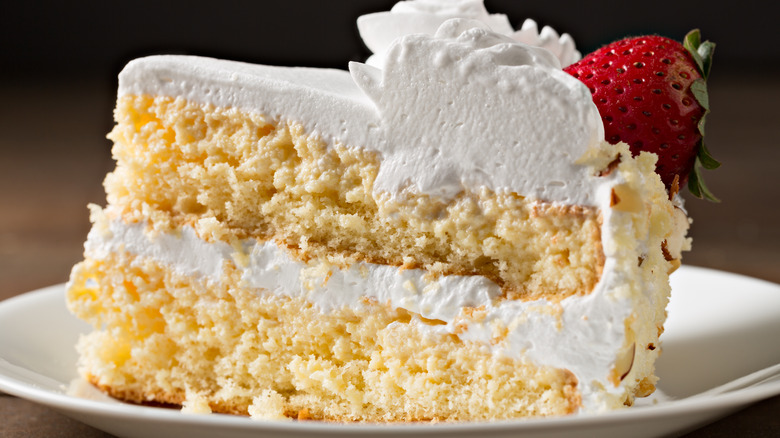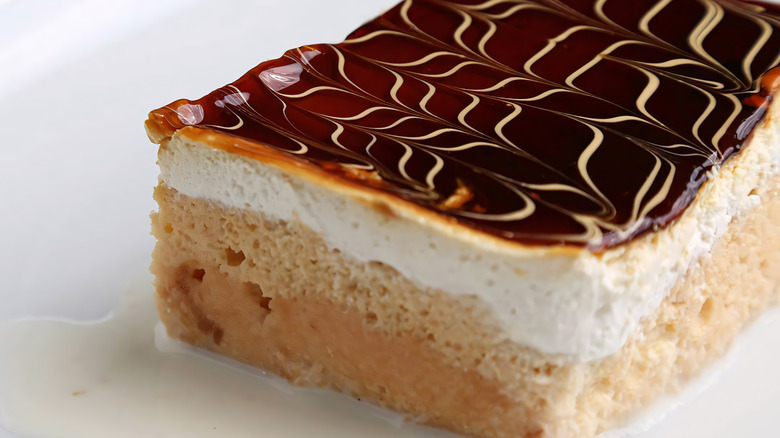The Complicated Origins Of The Tres Leches Cake
Meaning "three milks," tres leches is a fluffy, airy sponge cake soaked in a rich, sweet blend of sweetened condensed milk, evaporated milk, and whole milk, then topped with whipped cream or meringue and candied or syrupy fruit. It's a mainstay at bakeries, grocery stores, and birthday celebrations in most Central American countries. While tres leches is undoubtedly a Latin American dessert that spans multiple countries, its origins are hotly debated. The main contestants are Mexico and Nicaragua.
The recipe as we know it today didn't appear in cookbooks until the '60s or '70s, but the ingredients themselves are the invention of the dairy giants Nestlé and Borden, which began to mass produce sweetened condensed milk and evaporated milk during the mid-19th century for soldiers. As these products and manufacturing techniques were exported and outsourced to Mexico and Nicaragua by way of American occupation and imperialism during the late 19th and early 20th centuries, the first tres leches recipes began to emerge.
The Nicaraguan economy became dependent on livestock, beef, and dairy products during the 1930s, and as dairy production increased, so did its availability to the population. Many older generations thus recall tres leches as a popular dessert staple by the 1940s and '50s. Mexican tres leches likewise dates its origins to the widespread availability of sweetened condensed milk during the '40s. However, they credit tres leches to Nestlé Mexico's publicity campaign, inventing and printing the recipe on the label of sweetened condensed milk cans.
Tres leches prototypes
While the modern recipe for tres leches is inextricably linked to the globalization of canned dairy products, the concept of dairy, custard, or liquid-soaked desserts has existed for centuries. In England, Italy, France, Portugal, and Spain, soaked cake recipes date back to the Middle Ages. The English trifle and bread pudding, Italian tiramisu, Portuguese golden soup, and Spanish milk cakes are all examples of long-standing recipes that inundate dry or stale cake with custard, milk, wine, or cream.
In Mexico, the clear precursor to tres leches comes from regional Oaxacan and Sinaloan desserts. In Oaxaca, sopa borracha and ante almendra are two wine, milk, and custard-soaked cake recipes that pre-date tres leches. In Sinaloa, the viceroy cake is an even older trifle-like recipe brought by the Spanish featuring wine-soaked cake between layers of custard, dried fruit, and nuts. Nicaragua, having been a colony of both the English and the Spanish, also asserts the presence of soaked cake recipes that influenced the first tres leches recipe. Therefore, tres leches lies at cultural and temporal crossroads — first, the soaked cake recipes introduced by colonizing powers like the Spanish and English to Latin America, and later the introduction of preserved milk products via occupation and trade between North and Central America.

